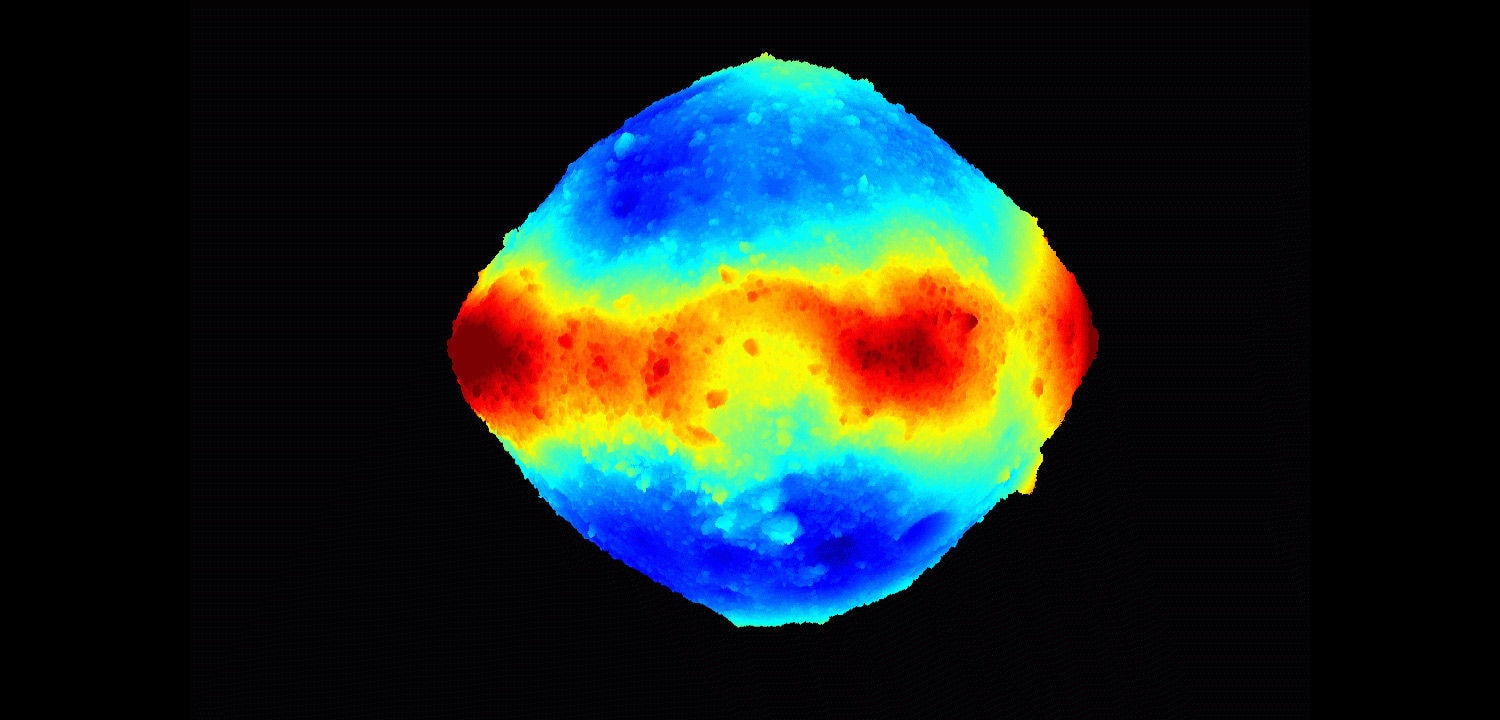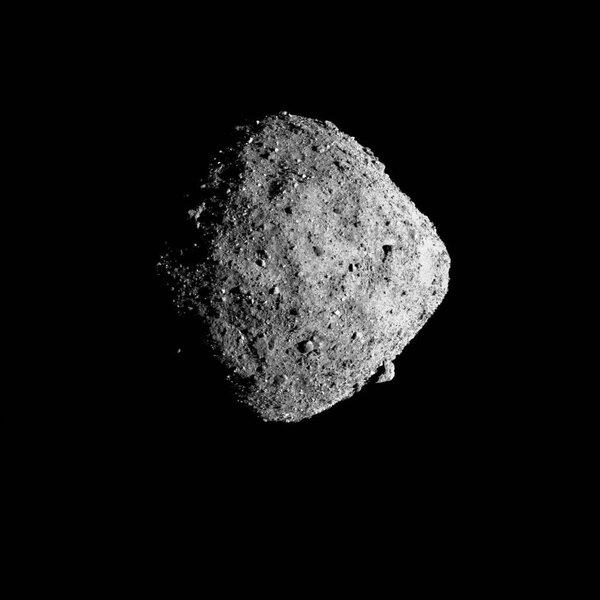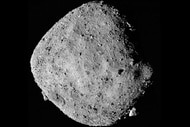Create a free profile to get unlimited access to exclusive videos, sweepstakes, and more!
On the asteroid Bennu, how much you weigh depends on where you are

In December of 2018, the OSIRIS-REx spacecraft entered the gravitational influence of the teeny asteroid Bennu. Since then it's been taking amazing images of the wee world, showing us the face of this bizarre alien place.
But taking images is only one aspect of the mission. It will (very soon!) collect samples of the asteroid to return to Earth for study, for example. It's also mapping the minerals in the surface rocks.
Another instrument you don't hear much from is the OLA, the OSIRIS-REx Laser Altimeter. This sends pulses of laser light at the asteroid, which reflects them back. We know the speed of light very accurately, so by timing the flight of each pulse, OLA builds up an elevation map of the surface. For example, a pulse hitting a rock on the surface will have a slightly shorter journey than one that hits a pit in the surface, so the travel time is shorter. The exact difference tells you the actual size of the rock and depth of the pit.
From February 12–17, 2019, when OSIRIS-REx was only about 2 kilometers above Bennu’s surface, OLA sent out 11 million such pulses, and then in July did it again from only 700 meters away! The combined total of 20 million pulses allowed scientists to create a pretty detailed topographical map of Bennu, and it's very, very cool:
Whoa. I created this video based on the original animated GIF made by the OSIRIS-REx team. It shows the asteroid rotating slowly once, then repeats twice with a faster frame rate. Blue areas are the lowest spots on the asteroid, then go through the spectrum (green, yellow, orange, red) to the highest elevations. There is no 'sea level' on Bennu so it's all relative; dark blue spots are about 60 meters lower than the dark red spots (for scale, the asteroid is about 500 meters across).
I love how the boulders on its surface stick way out; we saw this in the images before but it’s nice to get a handle on the topography this way.
The asteroid, as you can see, is roughly diamond shaped (I like to think of it more like two cones joined base-to-base). Bennu is a 'rubble pile'; literally a bunch of rocks held together by their own gravity. It has a very low density, which means it's porous: Something like half its volume is empty space. Imagine a stack of rocks on Earth and it makes sense. There's a lot of gaps between the rocks.
Bennu has very weak gravity. Like, incredibly weak. Standing on the pole, you'd weigh only about 8 one-millionths of what you weigh on Earth. That's about a thousandth of a pound for me.
Here's where things get fun. Bennu spins once every 4.3 hours. That means there's centripetal acceleration at its equator — though not physically accurate, you can think of it as a force outward that works in the opposite direction as gravity pulling you inward. Doing the math, I find that this acceleration is a little bit more than half the gravity you'd feel at the pole. In other words, on the equator you'd weigh half as much as you would on the pole just from this effect.
That's why Bennu has that weird shape. If a rock is dislodged (say because Bennu shakes a little bit when a small meteoroid hits it) that centripetal acceleration will tend to make it roll towards the equator. Eventually, material builds up there, giving it a bulge all the way around its middle.
Not only that, but because Bennu is wider through its equator than through its poles, gravity at its equator is lowered even more! Gravity depends on the mass of the object and your distance from it, and at the equator you’re about 15–30 meters farther from the center (the variation is due to the rugged surface). Gravity at the pole is about 8 millionths of a g, or 8 micro-g (one g is equivalent to Earth's gravity), but at the equator it's about 6 micro-g. Put in the centripetal acceleration, and the overall pull downwards drops to less than 2 micro-g!
So is you were standing on the north pole of Bennu and started walking toward the equator, you’d get lighter. Part of that is from the shape, and part from the spin. And it has that shape because it spins.
Imagine if Bennu spun just a bit faster. The centripetal acceleration at the equator could get high enough that it actually equals the gravity pulling stuff down. At that speed, nothing would be holding the rocks down on the equator. They'd literally be weightless. If the asteroid spun even a skosh faster, those rocks would get flung off. The asteroid would spin itself apart!
That's called the breakup speed. Due to weird processes (like the YORP effect) asteroids can spin faster over time, and they spin up too much they can tear themselves apart. It looks to me like Bennu is well on its way there.
We've seen this happen a few times, so it's a good thing we’re studying Bennu so closely. It should provide a lot of insight into how asteroids behave. We used to think they were just these chunks of rock out there between Mars and Jupiter, but now we understand there’s a rich variety of them, and they act in peculiar and fascinating ways. It can be easy to overlook something when you don't much about it… and then find out it becomes very interesting once you get to know it.
Huh. Maybe there's a lesson in there. Feel free to extrapolate it as you wish.















